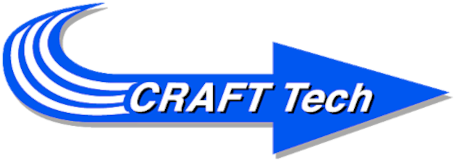CRAFT CFD is a multi-block, structured grid Navier-Stokes and Parabolized Navier-Stokes solver. CRAFT CFD features a 5th-order upwind Roe/TVD scheme with optional 4th order central blending for high-fidelity LES simulations, as well as hybrid RANS/LES. Various subgrid models are also included (Smagorinksy, Vreman, and Clark). CRAFT CFD has advanced turbulence modeling capabilities, including k-ε with specialized corrections, Scalar Fluctuation Models (SFM), and turbulence transition models for both onset and transition length prediction. Support for 2nd-order ADI time marching and many explicit RK schemes are built-in.
CRAFT CFD can be run in a parallel computing framework and supports several Message Passing Interface (MPI) methods. Non-contiguous block interfacing (NBI) and overset gridding are also supported for meshing of complicated geometries.
High-Altitude Simulations
CRAFT Tech is a leader in high-altitude simulation technologies. Applications such as spaced based thruster thermal heating and contamination effects, aero-capture, and thermal protection system design can involve mixed continuum/rarefied flow features. To efficiently and accurately simulate such applications, CRAFT Tech has developed a hybrid methodology whereby continuum flow is simulated using CRAFT CFD and rarefied flow is simulated using any conventional DSMC solver, thereby utilizing the most accurate modeling physics in each region. Communication between the solvers occurs across an interface surface, which can be quite complex. To streamline the process, CRAFT Tech has developed the Automatic Efficient Generalized Interface Surface Toolkit, or AEGIS toolkit, which allows for easy interface surface generation for even the most complex interface criteria.
Combustion Modeling
Extensive generalized chemical kinetics and particle modeling capabilities are available in CRAFT CFD. Modeling reacting flows is quite challenging, due to the increased computational cost associated with the large number of transported scalars, as well as the numerical stiffness. Our modeling framework has several innovative solutions for improving computational efficiency, including reduced chemistry models, In-Situ Adaptive Tabulation (ISAT), and dynamic adaptive chemistry. Learn more…
